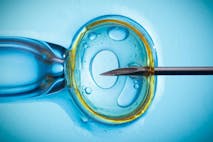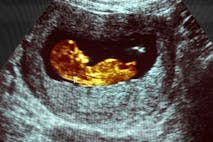
EU Parliament votes in favor of abortion travel fund
Bridget Sielicki
·
Could the abortion pill be behind the abortion rate increase in Texas?
(National Review) Last week, the Texas Health and Human Services Commission released abortion data for 2018 and 2019. The new data should concern pro-lifers, as they indicate that the incidence of abortion in Texas increased in both years. Between 2017 and 2019, the abortion rate in the Lone Star State increased by approximately 5 percent. During the same period, the incidence of abortion increased across nearly every racial and age category in the state. The data are broadly consistent with new data from the Centers for Disease Control (CDC), which showed a slight increase in the U.S. abortion rate between 2017 and 2018.
It is difficult to determine exactly why the abortion rate in Texas increased after a consistent long-term decline lasting more than 30 years. One possible explanation is that has become easier for Texas women to obtain chemical abortions early in pregnancy. In 2016, Texas was one of three states to require that physicians administering chemical-abortion drugs follow the Food and Drug Administration (FDA) label. However, in 2016 the FDA updated the labeling for the abortion drug Mifeprex, allowing chemical abortions to be obtained later in pregnancy, with fewer visits to the physician’s office. It seemed to make a difference: Between 2017 and 2019, the number of chemical abortions obtained by Texas women increased by about 32 percent.

One bright spot in the new data is that the abortion rate among minors in Texas has continued to decline. Overall, the rate of abortions among minors in the state fell by more than 3 percent between 2017 and 2019, and since 2010 it has fallen by a whopping 71 percent. This information is significant because in 2010, Texas removed Planned Parenthood from the state’s family planning program. Public-health professionals criticized this decision sharply, claiming that the rate of teen pregnancy would skyrocket. To the contrary, the significant long-term decline in both the minor birth rate and abortion rate demonstrates that positive public-health trends can continue without requiring taxpayers to fork over millions of dollars to Planned Parenthood.
Article continues below
Dear Reader,
In 2026, Live Action is heading straight where the battle is fiercest: college campuses.
We have a bold initiative to establish 100 Live Action campus chapters within the next year, and your partnership will make it a success!
Your support today will help train and equip young leaders, bring Live Action’s educational content into academic environments, host on-campus events and debates, and empower students to challenge the pro-abortion status quo with truth and compassion.
Invest in pro-life grassroots outreach and cultural formation with your DOUBLED year-end gift!
There are plenty of reasons for Texas pro-lifers to remain hopeful. During the past 20 years, Texas has been a national leader in enacting laws protective of preborn children. Since 2000, a pro-life parental-consent law, an informed-consent law, and a 20-week abortion ban have all gone into effect in the state. The Texas state legislature has increased funding for the state “Alternatives to Abortion” program, which provides millions of dollars annually to assist state pregnancy help centers. These efforts have paid off: According to Guttmacher Institute data, the state abortion rate has fallen by almost 70 percent between 1981 and 2017.
Even so, these new data show that some of this long-term progress may undone by the increased availability of chemical abortions. As always, pro-lifers would do well to be diligent.
Editor’s Note: This article was published at National Review and is reprinted here with permission.
“Like” Live Action News on Facebook for more pro-life news and commentary!
Live Action News is pro-life news and commentary from a pro-life perspective.
Contact editor@liveaction.org for questions, corrections, or if you are seeking permission to reprint any Live Action News content.
Guest Articles: To submit a guest article to Live Action News, email editor@liveaction.org with an attached Word document of 800-1000 words. Please also attach any photos relevant to your submission if applicable. If your submission is accepted for publication, you will be notified within three weeks. Guest articles are not compensated (see our Open License Agreement). Thank you for your interest in Live Action News!

Bridget Sielicki
·
Analysis
Nancy Flanders
·
International
Angeline Tan
·
Pop Culture
Cassy Cooke
·
International
Cassy Cooke
·
Analysis
Cassy Cooke
·
Guest Column
Michael J. New
·
Guest Column
Michael J. New
·
Guest Column
Michael J. New
·
Guest Column
Michael J. New
·
Guest Column
Michael J. New
·